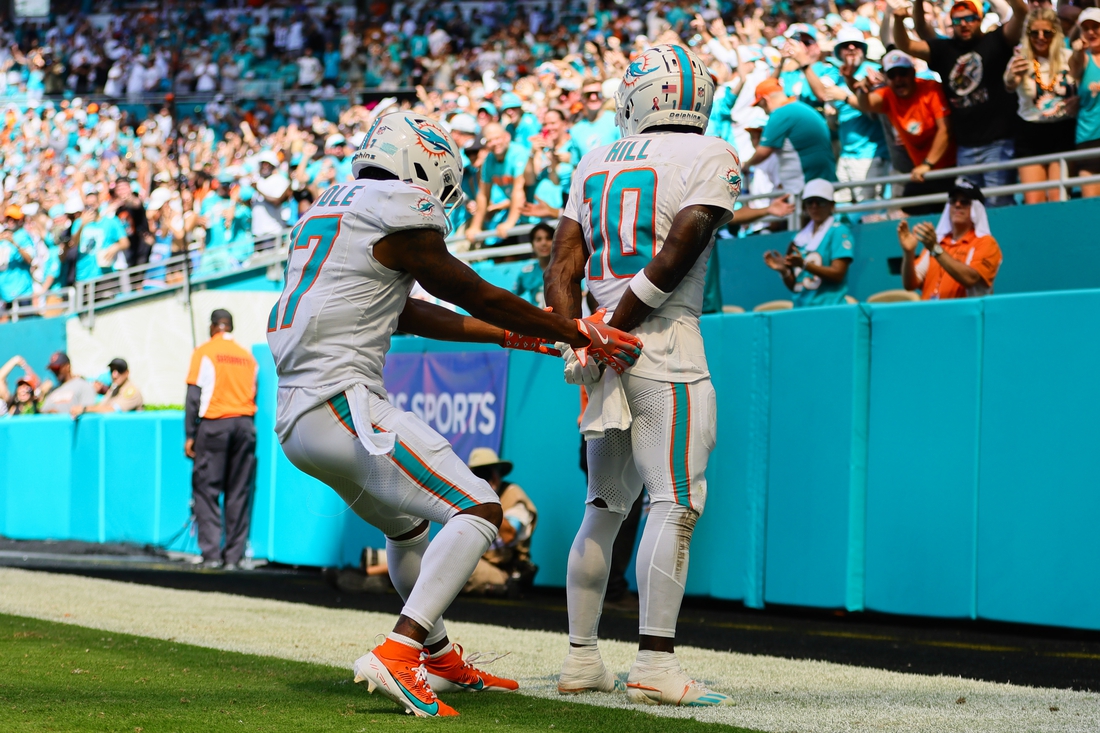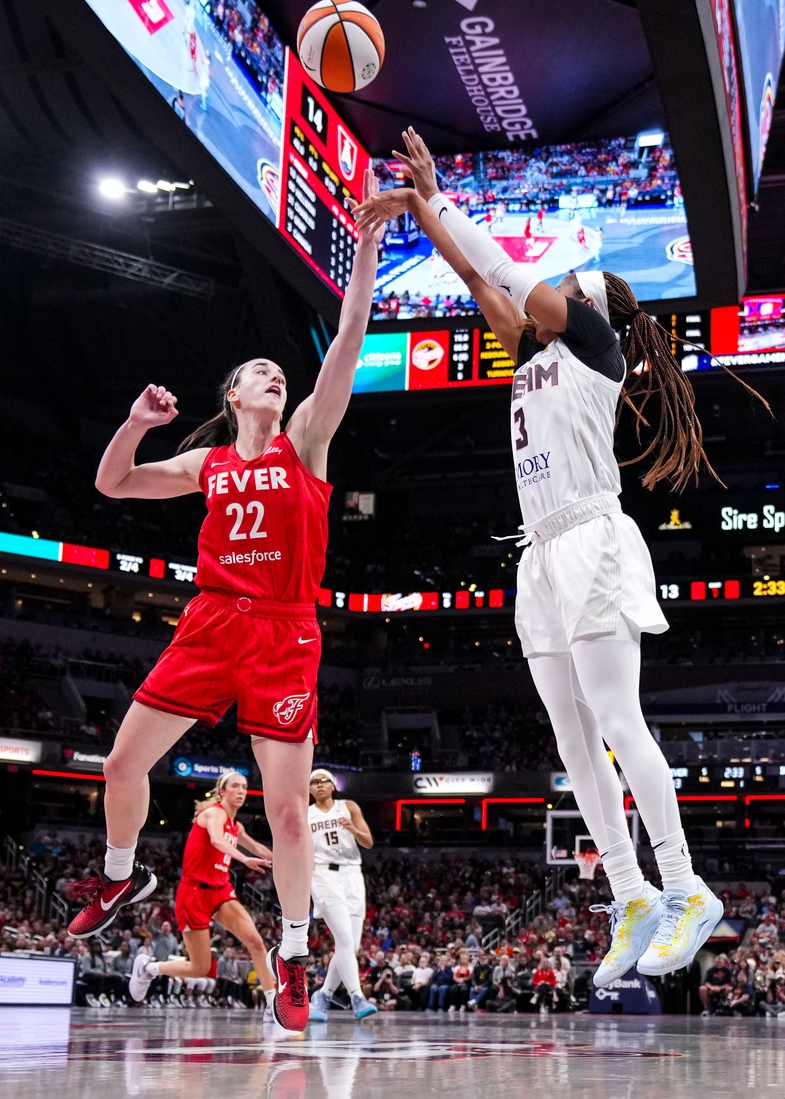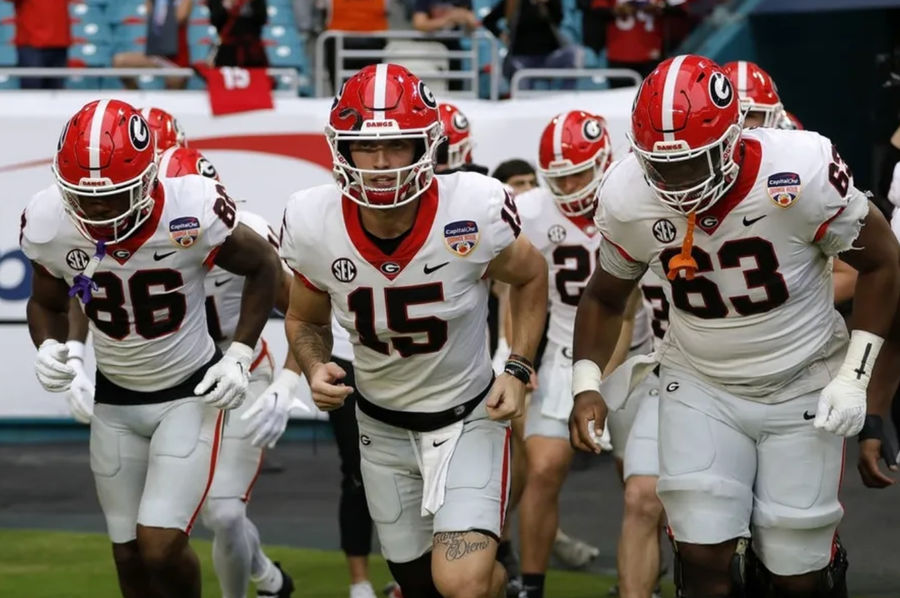 Dec 30, 2023; Miami Gardens, FL, USA; Georgia Bulldogs quarterback Carson Beck (15) leads the team onto the field before the game against the Florida State Seminoles for the 2023 Orange Bowl at Hard Rock Stadium. credits: Sam Navarro-USA TODAY Sports
Dec 30, 2023; Miami Gardens, FL, USA; Georgia Bulldogs quarterback Carson Beck (15) leads the team onto the field before the game against the Florida State Seminoles for the 2023 Orange Bowl at Hard Rock Stadium. credits: Sam Navarro-USA TODAY Sports The new magic number in college football is 12.
That’s how many teams will qualify for the CFP now that the size of the field has tripled. The unprecedented degree of expanded inclusion gives a whole bunch of teams a whole bunch more hope of reaching the playoffs.
The near necessity of winning a conference championship to reach the CFP is much less of a necessity nowadays, though there remains significant value in it because the five highest-ranked conference champions (by the selection committee) will receive an automatic bid and the top four will get a first-round bye.
Winning the conferences that are perennially the highest-rated has become more challenging because the de facto program transfer portal has created some intriguing collections of programs.
The Atlantic Coast Conference now includes two schools—Cal and Stanford—whose campuses are in the neighborhood of the Pacific Ocean. The Big 12 now numbers 16 teams, including newcomers such as Arizona, Arizona State, BYU, Colorado and Utah, and the Big 10 now numbers 18 teams, including newcomers USC, UCLA, Oregon and Washington.
So even though there are a dozen invitations to be had, teams from the power conferences generally face even more challenging regular seasons. And teams from non-power conferences have an even more difficult time proving their worthiness, though they too have more opportunities to attract an invite.
If one thing is sure in all of this, it’s that unlucky No. 13 in the CFP rankings won’t feel any less slighted than undefeated No. 5 Florida State and once-beaten and two-time defending CFP champion (and No. 6) Georgia felt last season.
Keeping all that in mind, here’s one prediction of who will wind up being the Top 12 teams in college football:
12. Boise State
 Dec 2, 2023; Las Vegas, NV, USA; The Mountain West conference logo on the field at Allegiant Stadium. credits: Kirby Lee-USA TODAY Sports
Dec 2, 2023; Las Vegas, NV, USA; The Mountain West conference logo on the field at Allegiant Stadium. credits: Kirby Lee-USA TODAY Sports The Broncos inserted themselves into the national college football conscience on January 1, 2007, when they upset Oklahoma 43-42 in overtime at the Fiesta Bowl in one of the most memorable bowl games ever.
Boise has had its ups and downs in recent seasons, but it’s trending upward again and will be a party crasher again as the Group of Five conference champion (Mountain West) joins the winners of the ACC, Big 10, Big 12 and SEC as automatic qualifiers for the first 12-team playoff.
11. Missouri
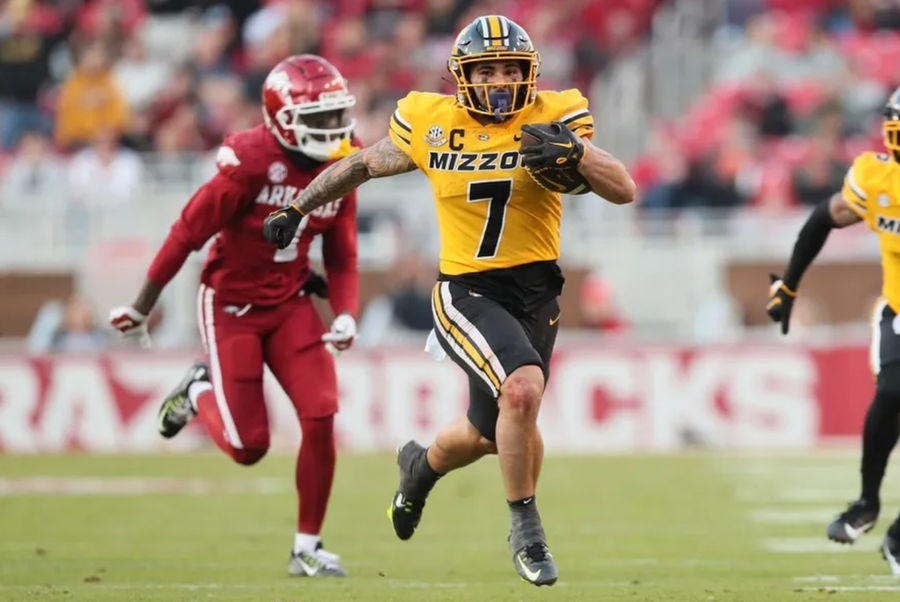 Nov 24, 2023; Fayetteville, Arkansas, USA; Missouri Tigers running back Cody Schrader (7) rushes against the Arkansas Razorbacks during the second quarter at Donald W. Reynolds Razorback Stadium. credits: Nelson Chenault-USA TODAY Sports
Nov 24, 2023; Fayetteville, Arkansas, USA; Missouri Tigers running back Cody Schrader (7) rushes against the Arkansas Razorbacks during the second quarter at Donald W. Reynolds Razorback Stadium. credits: Nelson Chenault-USA TODAY Sports Nick Saban is no longer at Alabama, Florida is coming off a losing season, Texas A&M, Auburn, Mississippi State and Arkansas have slipped, and LSU has to replace Heisman Trophy-winning quarterback Jayden Daniels.
So upward mobility is more attainable in the SEC, and Missouri is already on the move. Last year, the Tigers broke through with their first winning record of coach Eli Drinkwitz’s four seasons, nearly doubling their victory total from 2022, finishing 11-2 after beating Ohio State in the Cotton Bowl and landing at No. 8 in the final CFP rankings.
10. Michigan
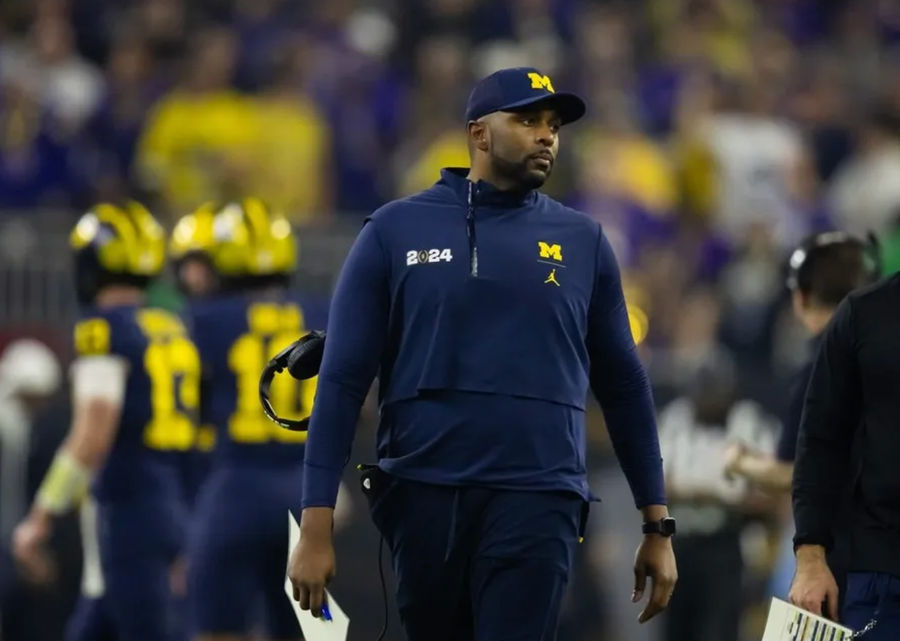 Jan 8, 2024; Houston, TX, USA; Michigan Wolverines offensive coordinator Sherrone Moore against the Washington Huskies during the 2024 College Football Playoff national championship game at NRG Stadium. credits: Mark J. Rebilas-USA TODAY Sports
Jan 8, 2024; Houston, TX, USA; Michigan Wolverines offensive coordinator Sherrone Moore against the Washington Huskies during the 2024 College Football Playoff national championship game at NRG Stadium. credits: Mark J. Rebilas-USA TODAY Sports Many of the key contributors as the Wolverines went undefeated and claimed their first national championship in 26 years last season are now in the NFL, including first-year Los Angeles Chargers head coach Jim Harbaugh.
But Sherrone Moore did quite well as acting head coach while Harbaugh served a four-game suspension during last season’s run, and he should keep Michigian rolling as Harbaugh’s full-time replacement.
9. Oklahoma
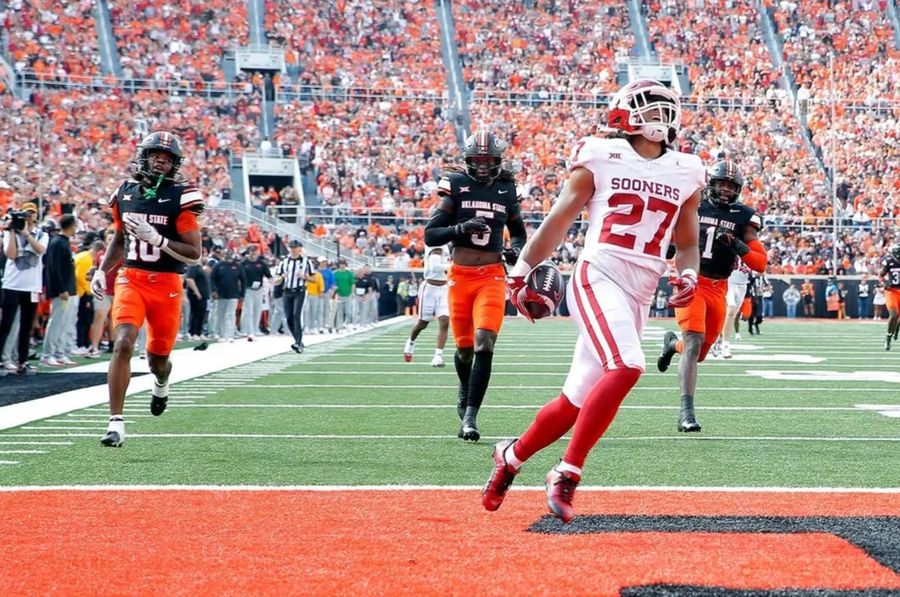 Oklahoma’s Gavin Sawchuk has sparked a two-game winning streak to keep the Sooners in the New Year’s Six conversation. credits: SARAH PHIPPS/THE OKLAHOMAN / USA TODAY NETWORK
Oklahoma’s Gavin Sawchuk has sparked a two-game winning streak to keep the Sooners in the New Year’s Six conversation. credits: SARAH PHIPPS/THE OKLAHOMAN / USA TODAY NETWORK The Sooners stumbled to a 6-7 record in former defensive coordinator Brent Venables’ first season as head coach in 2022. They turned things around with a 10-3 record last season, and if highly regarded sophomore Jackson Arnold lives up to the expectation that he’ll be this school’s next great quarterback, the Sooners’ SEC debut will be a success.
8. Penn State
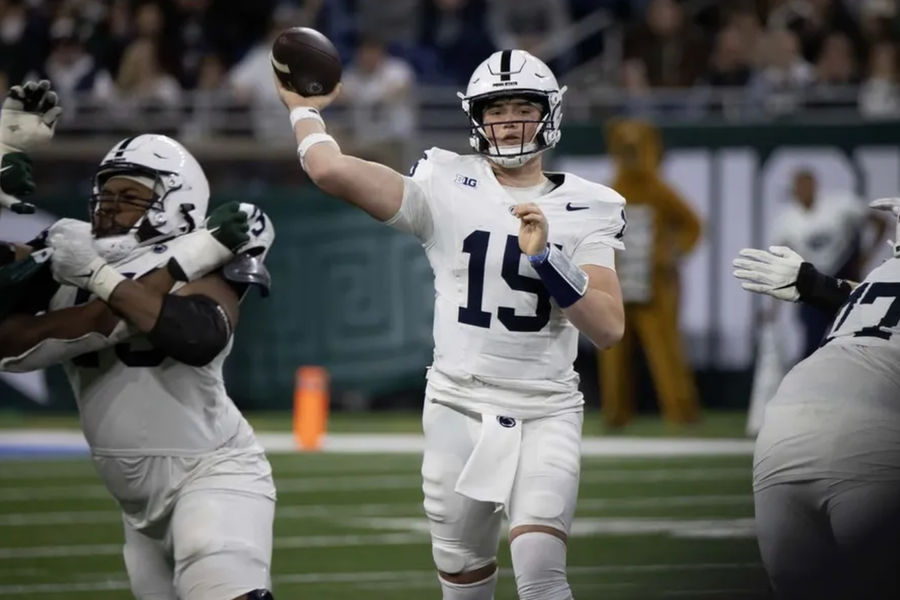 Nov 24, 2023; Detroit, Michigan, USA; Penn State Nittany Lions quarterback Drew Allar (15) passes the ball against the Michigan State Spartans during the second half at Ford Field. credits: David Reginek-USA TODAY Sports
Nov 24, 2023; Detroit, Michigan, USA; Penn State Nittany Lions quarterback Drew Allar (15) passes the ball against the Michigan State Spartans during the second half at Ford Field. credits: David Reginek-USA TODAY Sports Former Kansas coordinator Andy Kotelnicki takes over the Nittany Lions offense, and he’ll be able to coax more productivity out of quarterback Drew Allar and keep Penn State in the mix at the top of the really big ten.
7. Ole Miss
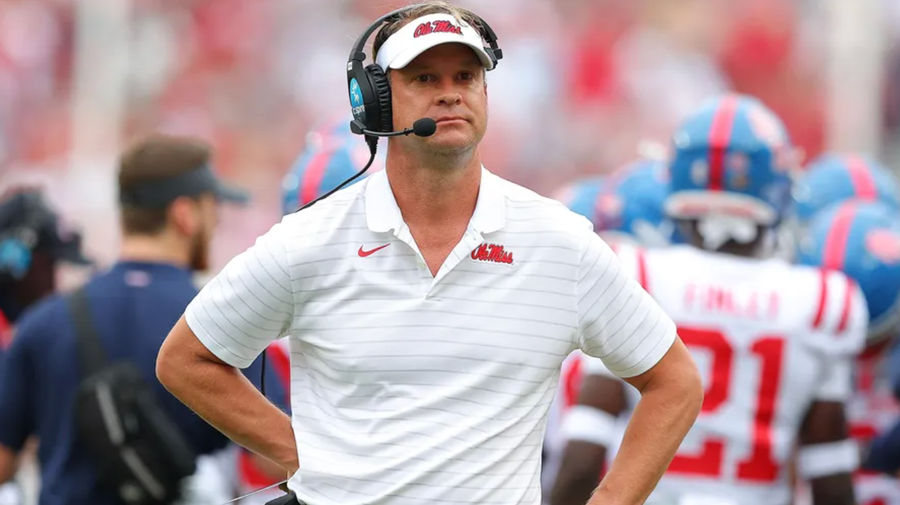 Ole Miss head coach Lane Kiffin. source: Getty Images
Ole Miss head coach Lane Kiffin. source: Getty Images Rebels coach Lane Kiffin has instituted the most active transfer portal in the country, and the infusion of talent should help Ole Miss match or top last season’s performance, which produced the first 11-win season in school history.
6. Florida State
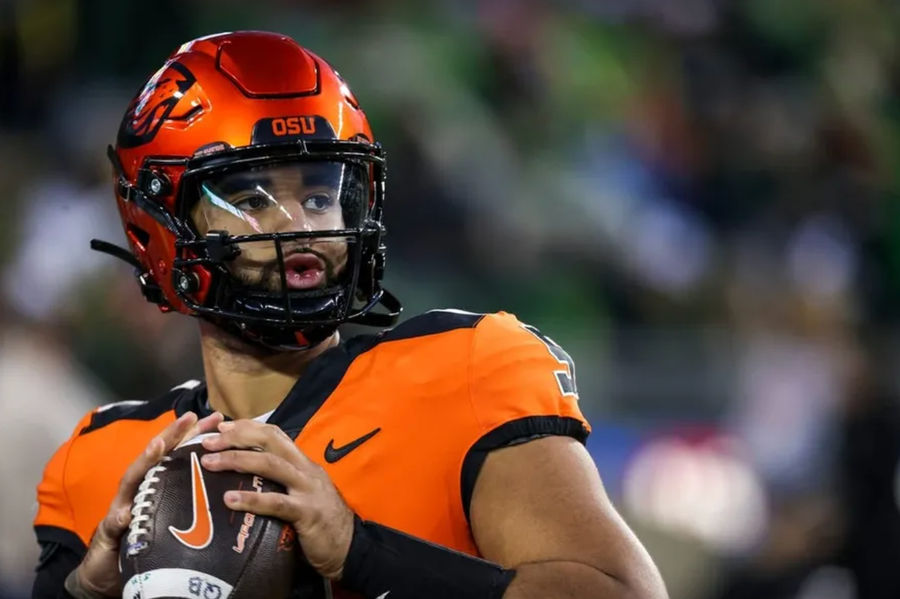 Quarterback DJ Uiagalelei is now with Florida State. credits: Abigail Dollins/Statesman Journal / USA TODAY NETWORK
Quarterback DJ Uiagalelei is now with Florida State. credits: Abigail Dollins/Statesman Journal / USA TODAY NETWORK The Seminoles won 23 games in the last two seasons but couldn’t get into the CFP. Even a 13-0 regular season last year wasn’t good enough after the CFP selection committee deemed the absence of injured star quarterback Jordan Travis as disqualifying.
Even though Jordan has moved on, the arrival of former Clemson and Oregon State quarterback DJ Uiagalelei should be good enough to keep a talented team galvanized by the snub last season in elite company.
5. Alabama
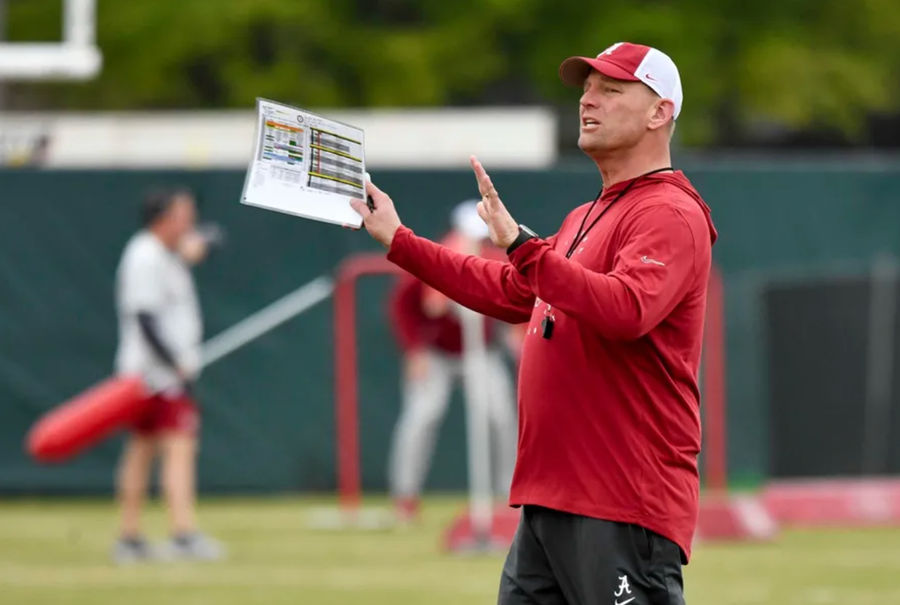 Mar 21, 2024; Tuscaloosa, Alabama, USA; Alabama head coach Kalen DeBoer gives directions during practice at the University Alabama Thursday. PHOTO USA TODAY IMAGES.
Mar 21, 2024; Tuscaloosa, Alabama, USA; Alabama head coach Kalen DeBoer gives directions during practice at the University Alabama Thursday. PHOTO USA TODAY IMAGES. Kalen DeBoer took Washington to the national championship game last season, which was a significant factor in his being selected to succeed Saban. If he wants to keep his new bosses happy, he needs to make such trips a pretty regular occurrence.
The Crimson Tide expects a berth in the expanded playoff to be a given. Heck, it was practically a given when the field was limited to four teams.
With returning quarterback Jalen Milroe and one of the most talented, deep and versatile rosters in the country, Alabama will still be among the elite.
4. Oregon
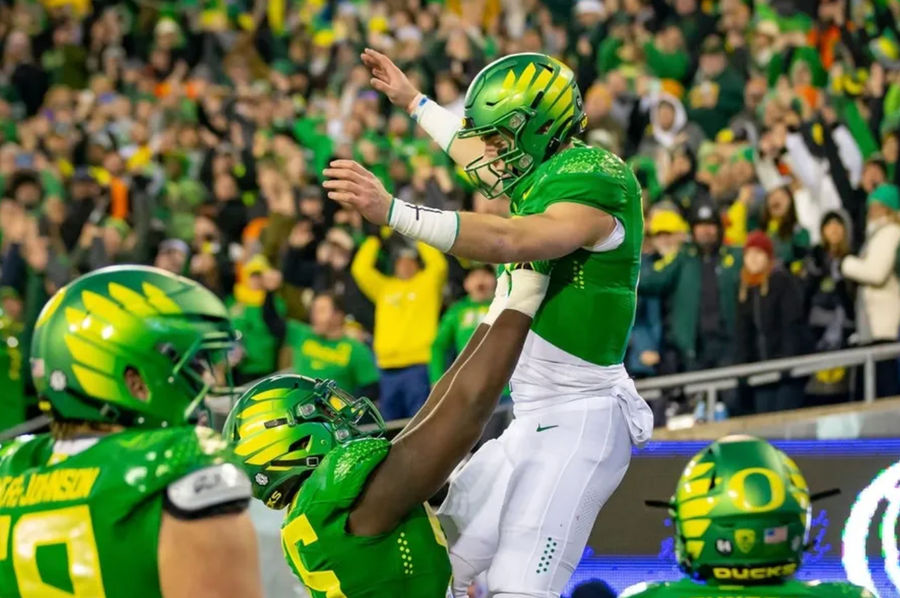 Former Oregon quarterback Bo Nix is hoisted into the air after a touchdown as the No. 6 Oregon Ducks take on the No. 16 Oregon State Beavers Friday, Nov. 24, 2023, at Autzen Stadium in Eugene, Ore. credits: Ben Lonergan/The Register-Guard / USA TODAY NETWORK
Former Oregon quarterback Bo Nix is hoisted into the air after a touchdown as the No. 6 Oregon Ducks take on the No. 16 Oregon State Beavers Friday, Nov. 24, 2023, at Autzen Stadium in Eugene, Ore. credits: Ben Lonergan/The Register-Guard / USA TODAY NETWORK Oregon might feel like a bunch of ducks out of water when they play conference road games in places such as West Lafayette, Indiana, Ann Arbor, Michigan and Madison, Wisconsin.
But with former Oklahoma and UCF quarterback Dillon Gabriel capable of doing what former Auburn quarterback Bo Nix did last season, Oregon will continue to roll under Dan Lanning, who is 22-5 in two seasons as head coach.
3. Texas
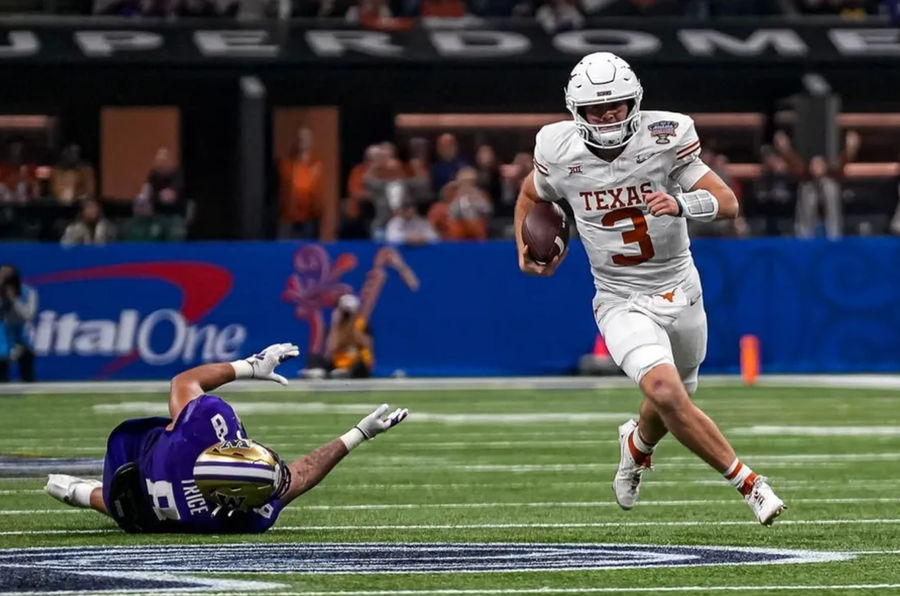 Texas Longhorns quarterback Quinn Ewers (3) evades a tackle by Washington edge Bralen Trice (8) during the Sugar Bowl College Football Playoff semifinals game at the Caesars Superdome on Monday, Jan. 1, 2024 in New Orleans, Louisiana. credits: Aaron E. Martinez/American-Statesman / USA TODAY NETWORK
Texas Longhorns quarterback Quinn Ewers (3) evades a tackle by Washington edge Bralen Trice (8) during the Sugar Bowl College Football Playoff semifinals game at the Caesars Superdome on Monday, Jan. 1, 2024 in New Orleans, Louisiana. credits: Aaron E. Martinez/American-Statesman / USA TODAY NETWORK It was just three years ago that the Longhorns were 5-7, but after reaching the CFP last season and narrowly losing to Washington in a semifinal in the Allstate Sugar Bowl, Texas is back to being Texas.
And that means it has a roster filled with NFL prospects and, more to the point, players capable of competing in the SEC, led by quarterback Quinn Ewers.
2. Ohio State
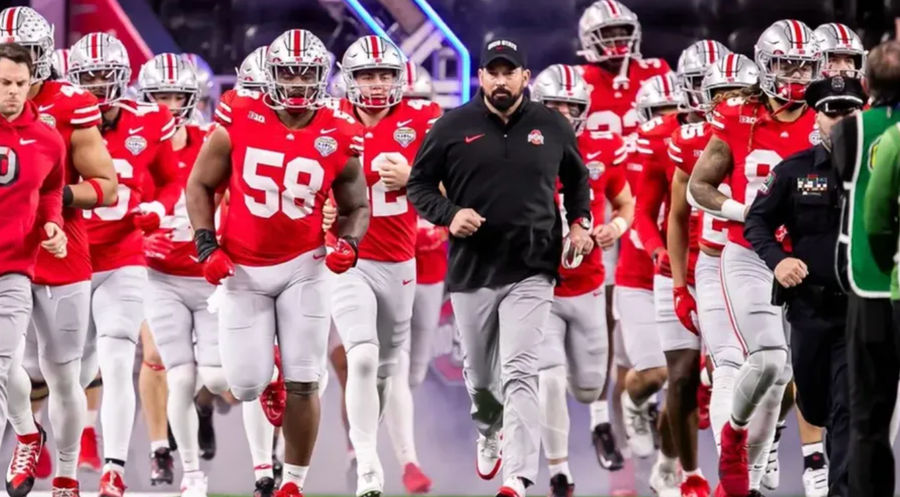 Ryan Day and the Ohio State Buckeyes take the field. source: Getty Images
Ryan Day and the Ohio State Buckeyes take the field. source: Getty Images There used to be a Big Ten Conference that actually included exactly 10 teams and a Pacific 10 Conference (and later a Pac 12) that actually included the number of teams suggested by their names. And the champions of those conferences would meet in the Granddaddy of them all (the Rose Bowl), a fixture of New Year’s Day for generations.
All of that is history now, but Ohio State and the Big Ten (plus eight) are trying to maintain that relationship in new ways. The conference has the four West Coast imports, and the Buckeyes imported Chip Kelly, former head coach at Oregon and UCLA, to be their new offensive coordinator.
With a new OC and operating inside a renovated conference, Ohio State will remain what it always is: a prime contender for the national championship.
1. Georgia
For all the debate over Florida State, Georgia felt pretty slighted after dropping from No. 1 to No. 6 in the wake of a three-point loss to Alabama in the SEC Championship Game.
(By the way, the slighted Bulldogs blasted the slighted and short-handed Seminoles 63-3 in the Orange Bowl).
With quarterback Carson Beck returning on a roster as talented as head coach Kirby Smart’s championship teams, Georgia should be able to keep up the pace it has set with a 42-2 record the last three seasons.




